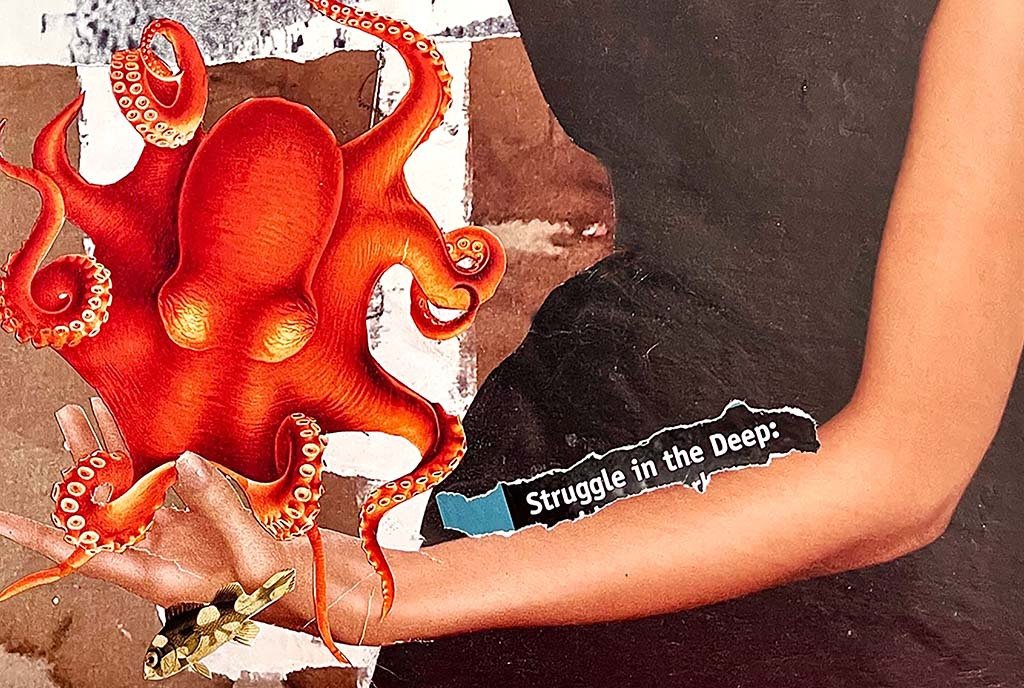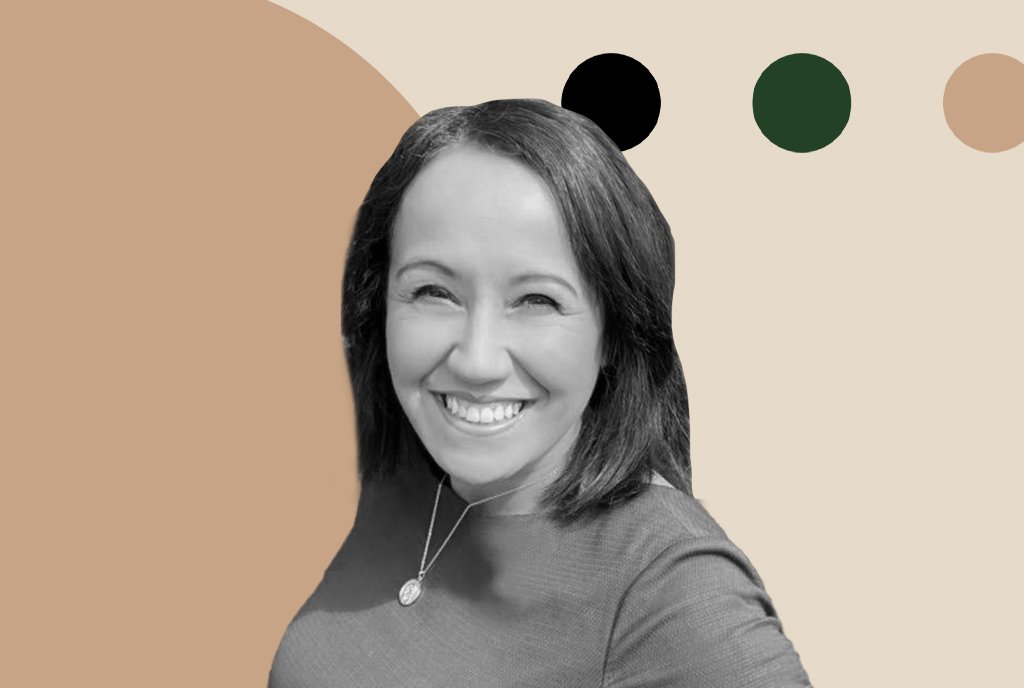
Editors’ note: This piece is from Nonprofit Quarterly Magazine’s summer 2024 issue, “Escaping Corporate Capture.”
For tens of millions of people, the American dream is no longer owning a house with a white picket fence; it is getting out of crushing debt.1 Our economic system leaves many if not most of us no choice but to borrow for healthcare, housing, education, and other basic needs.2
Starting in the 1970s, the United States (and much of the rest of the world) moved from a tax-funded welfare state (albeit one that primarily benefited White men and their heteronormative families) to a debt-funded welfare state—a “debtfare state”—that forces ordinary people to access what could and should be publicly financed goods through individual debt obligations.3 As a result of this shift toward the financialization of the social safety net, household debt has become a key vector of economic, gender, and racial inequality in today’s asset economy.4 Over the last half-century, formerly public (as in, taxpayer funded) higher education became ever-more expensive, healthcare costs skyrocketed, and housing became a speculative asset rather than a roof over peoples’ heads.5 This left people in debt not because they lived beyond their means but because they were denied the means to live.
Together, debtors can wield leverage over the economic and political systems not only to abolish debts but also to demand reparative public goods.
If debtors are on one side of financial contracts, creditors are on the other. All debts are someone else’s assets. Privatization and financialization of housing and medical care in particular (not to mention the huge tax breaks for corporations and the wealthy that also define this era) have meant that wealth has concentrated at the top while the majority of households scramble to stay afloat, with historically marginalized communities the most likely to be weighed down by unpayable debts and exploited by predatory lenders.6
Household debt driven by financialization is a set of unevenly held liabilities—but taken together, this debt is also potential leverage. Mass indebtedness presents an opening for a new form of resistance to exploitation. As in the words often attributed to J. Paul Getty: “If you owe the bank $100,000, the bank owns you. If you owe the bank $100 million, you own the bank.”7 Adding up household debt—or, more specifically, organizing household debtors into debtors’ unions—turns the tables: organized debtors can own the banks.
The Debt Collective
This is the work of the Debt Collective, where we bring debtors together to turn individual economic burdens into collective power.8 How? My individual student debt might be $60,000, with monthly payments I can’t afford. But student debtors together—organized—owe nearly $2 trillion!9 That is $2 trillion of leverage with which to push for the economic systems we need, including free public higher education. Indebtedness can form the basis of a formidable and strategic coalition that unites people across race, age, gender, and geographic divides while also centering and uplifting those most impacted. Together, debtors can wield leverage over the economic and political systems not only to abolish debts but also to demand reparative public goods—the forms of social provision that would not only stop people from falling into debt in the first place but also guarantee each and every one of us a dignified life.
The Debt Collective organizes debtors toward consciousness and power—bringing together grassroots resistance work, political education, narrative change, and policy expertise to build the momentum and leverage necessary for meaningful structural change. Our tactics include direct outreach, creative legal and policy intervention, public education, high-impact media, coalition building, and bold collective action, including protests and debt strikes. To understand this last tactic, it is helpful to think of the analogy between labor unions and debtors’ unions. Just as a labor strike—or the threat of one—can bring employers to the bargaining table and radically change the conditions of workers, so too can a debt strike—or the threat of one—bring creditors to the bargaining table and radically change the condition of debtors.
Like employers, creditors have enormous power over people’s lives. We debt-finance our healthcare, education, housing, and even our own incarceration!10 And when debtors can’t pay, we are disciplined with steep penalties, high interest rates or loan denials, and damaged credit scores—not to mention poverty when unpayable bills come due. State power is often deployed to enforce unfair financial contracts through court judgments, garnishments, and even jail time. The Debt Collective does not advise financial suicide—individual refusal to repay debts—but rather, coordinated and strategic campaigns of resistance: individual default is not a debt strike. As with any organizing campaign, there is no guarantee of success. Bosses retaliate against workers, and creditors can be expected to do the same to debtors who dare to throw down the gauntlet. But it is worth the risk, because the present situation is unbearable.
Because education, healthcare, and housing have been three of the key areas ravaged by privatization and financialization, unevenly indebting people for the basic things they need to survive and thrive, the Debt Collective’s work to date has focused on those three areas.
Education
For more than a decade, the Debt Collective has been helping lead the fight to cancel student debt and advance the cause of free higher education. Our work has pushed demands once seen as radically fringe into the mainstream. We got our start organizing student debtors who had been defrauded by predatory for-profit colleges, in 2014.11 Thanks to our organizing, hundreds of thousands of defrauded for-profit college borrowers have been granted tens of billions of dollars in life-changing debt relief12—relief that is still being granted today.
With the dream of home ownership out of reach and housing ownership increasingly concentrated in the hands of corporate landlords, more and more people are realizing that housing must be decommodified and democratized.
Our work brought to light the president’s statutory authority to cancel student debt (a legal authority that doesn’t require going through a gridlocked Congress).13 We used this leverage to build a multiracial and multigenerational organizing campaign that successfully pressured President Biden to promise and deliver on student debt relief.14 The Biden administration has canceled $153 billion in student debt for over 4 million people and counting.15 When the Supreme Court struck down President Biden’s attempt to cancel student debt in summer 2023, Debt Collective members forced the Biden administration to make plans for future cancellation using other legal authorities our research helped uncover.16 Today, Biden’s Plan B has a fighting chance17—but only if we keep organizing.
Meanwhile, we are also expanding our fight to the next frontier: undoing the dismantling of public higher education18—which has been so rampant that it is dubious to even call it public higher education anymore19— and creating the conditions in which we can make college free. This is particularly important, given current and ongoing political attacks on all aspects of academic life, which has been painted as elite, corrupting, and urgently in need of defunding.20
Healthcare
The national crisis of medical debt is growing at an explosive pace. “More than 100 million” Americans—over “40% of all adults”—actively struggle to pay unaffordable healthcare bills,21 and many more postpone critical care for fear of the cost, often resulting in far greater expense. The massive scale of the medical debt problem presents a unique organizing opportunity: it is a deeply and widely felt issue that crosses traditional lines of division. People of all political persuasions, races, and geographies scramble to finance their healthcare without having to make extreme, life-threatening sacrifices in other areas of life. Some, of course, more than others.22 Debt Collective’s strategy harnesses the collective potential this creates, approaching the immediate experience of medical indebtedness as a catalyst to build the power and political will necessary to win a system of publicly funded universal healthcare.
Sign up for our free newsletters
Subscribe to NPQ's newsletters to have our top stories delivered directly to your inbox.
By signing up, you agree to our privacy policy and terms of use, and to receive messages from NPQ and our partners.
Debt Collective’s work on medical debt is our newest project and the first of its kind to organize for universal healthcare from the point of medical indebtedness. The experience of medical debt—its battery of past-due bills and collection notices—does not need to be one of private shame and isolation. Through organizing, it can also be an invitation into collective resistance and the fight for healthcare as a reparative public good. We build momentum toward this by bringing together creative grassroots campaign strategies and sophisticated policy interventions.
The broad target of our work is the hospital industry; hospitals are functionally the primary creditors in medical-debt relations.23 This practical choice is also a strategic one: under the Affordable Care Act (ACA), nonprofit hospitals (the majority of hospitals in the United States) are required to provide free and reduced-cost care to low-income patients. In exchange for this “charity care” provision, they receive generous tax exemptions and other public subsidies. But most hospitals shamelessly violate these financial-assistance requirements by using collections, lawsuits, wage garnishments, home liens, and even arrest warrants to pursue their most economically vulnerable patients for debts they should not owe.
Our medical-debt project is twofold: first, to secure near-term relief for medical debtors via hospital financial assistance requirements; and second, to build campaigns for systemic change that challenge the private profit motive in US healthcare and lay the groundwork for a universal single-payer system.
Housing
With the dream of home ownership out of reach and housing ownership increasingly concentrated in the hands of corporate landlords, more and more people are realizing that housing must be decommodified and democratized; and tenant organizing is on the rise.24
Alone, our rent payment is a burden; but collectivized, our rent payments give us power over landlords. And a novel form of COVID-19 rent debt has only heightened the organizing potential of this moment.25 At the onset of the COVID-19 pandemic, as millions lost wages and work, a patchwork suite of protections emerged to safeguard tenants from losing housing.26 Many jurisdictions temporarily decoupled rent owed from eviction.27 While millions of tenants stayed housed under these protections, they also accumulated debt owed to their landlords in the process.28 The 2023 sunsetting of these rent-related eviction protections means that, as of March 2023, tenants across the United States owe nearly $11 billion in back rent.29 Millions again face eviction, with new debts to landlords in tow.30
And the data are clear that rent debt disproportionately burdens Black and Latinx households. As a team at the New York City housing justice nonprofit Community Solutions writes, “The evidence shows that people of color in the U.S. are disproportionately likely to be extremely low-income renters (i.e., at or below the poverty line or 30% of area median income), putting them at greater risk of suffering from rental debt. Findings also demonstrate that the majority of renters behind on rent in the U.S. are people of color (65%) and low-income (80%).”31
Can debtors take on privatization and corporate power alone? Definitely not. But we believe that debtor organizing opens up a valuable new front in the fight for equality, and that ordinary people cannot afford to leave power on the table.
In response to these developments, the Debt Collective partnered with the Los Angeles Tenants Union, the Anti-Eviction Mapping Project, and other allies to build the Tenant Power Toolkit.32 The Tenant Power Toolkit consists of two primary resources: our Eviction Defense Tool, which enables any tenant in California to file a legal answer to their eviction for free, multilingually, and within a larger organizing ecology (launched in July 2022); and a national rent debt questionnaire that will help us understand who and where rent debtors are, and which landlords they owe (launched in April 2024).
Since launching the Eviction Defense Tool, usage has climbed steadily, from 136 users per month when we first launched to over 500 monthly users as of March 2024. To date, more than 8,000 “Eviction Answers” have been prepared by our Toolkit. This has allowed approximately 21,600 tenants (over a third of them children) to avoid default evictions. With the new data and insights we gather about national rent debt, we believe we can identify corporate targets and organize renters to build power to take housing out of the hands of corporate conglomerates and put it back within the reach of everyday people.
***
Debtor organizing is complementary to other forms of organizing, which is why we work closely with allies in the labor and tenant movements and elsewhere. Debtor organizing is a matter of economic justice—a large portion of people’s wages gets eaten up by debt payments, and burdensome loans make people more susceptible to exploitation on the job. It is a matter of racial justice, given the history and prevalence of predatory lending, redlining, racialized credit scoring, inequality vis-à-vis who does and who does not have intergenerational wealth to pay down debts, and other forms of structural discrimination in this country. It is a matter of gender justice, since persistent wage gaps make it harder for women to pay back what they have borrowed. And it is a matter of democracy and civic engagement: today, creditors are well-represented in the halls of power, and they wield that power to advance a deregulatory corporate and financial agenda that harms people and the planet.
Can debtors take on privatization and corporate power alone? Definitely not. But we believe that debtor organizing opens up a valuable new front in the fight for equality, and that ordinary people cannot afford to leave power on the table. Indeed, debtors need to get organized, and fast. Together, we can challenge narratives and systems that enshrine austerity as inevitable and privatization as preferable to investing in public goods. We can also prove that creditors—be they the Federal Student Aid office or a Wall Street landlord—are not, in fact, all-powerful. They need us, and our monthly payments, far more than we need them.
Notes
- See, for example, United States Senate Committee on Banking, Housing, and Urban Affairs, “Brown: Student Debt Made a Lie Out of the American Dream,” press release, May 5, 2022, banking.senate.gov/newsroom/majority/brown-student-debt-made-a-lie-out-of-the-american-dream.
- Christian Weller, “It Is Not Healthy When Middle-Class Families Drown In Debt In A Growing Economy,” Forbes, last modified January 7, 2021, www.forbes.com/sites/christianweller/2020/02/03/it-is-not-a-healthy-sign-when-middle-class-families-drown-in-debt-in-an-expanding-economy.
- This theme has been widely covered in the See Debt Collective, Can’t Pay, Won’t Pay: The Case for Economic Disobedience and Debt Abolition (Chicago: Haymarket Books, 2020); Andrew Ross, Creditocracy: And the Case for Debt Refusal (New York: OR Books, 2014); and Louis Hyman, Debtor Nation: The History of America in Red Ink (Princeton, NJ: Princeton University Press, 2011).
- See, for example, Jenifer Hamil-Luker and Angela O’Rand, “Black/white differences in the relationship between debt and risk of heart attack across cohorts,” Social Science & Medicine: Population Health 22 (June 2023).
- These themes are broadly explored in many books, including the following: Tressie McMillan Cottom, Lower Ed: The Troubling Rise of For-Profit Colleges in the New Economy (New York: The New Press, 2018); Christopher Newfield, The Great Mistake: How We Wrecked Public Universities and How We Can Fix Them (Baltimore, MD: Johns Hopkins University Press, 2016); Charlie Eaton, Bankers in the Ivory Tower: The Troubling Rise of Financiers in US Higher Education (Chicago: University of Chicago Press, 2022); and Luke Messac, Your Money or Your Life: Debt Collection in American Medicine (Oxford, England: Oxford University Press, 2023). See also Haran Ratna, “Medical neoliberalism and the decline in U.S. healthcare quality,” Journal of Hospital Management and Health Policy 4, no. 7 (March 2020); and Brett Christophers, Our Lives in Their Portfolios: Why Asset Managers Own the World (Brooklyn, NY: Verso, 2023).
- See Cottom, Lower Ed; and Debt Collective, Can’t Pay, Won’t Pay. See also Keeanga-Yamahtta Taylor, Race for Profit: How Banks and the Real Estate Industry Undermined Black Homeownership (Chapel Hill, NC: University of North Carolina Press, 2019); Jalil Mustaffa and Jonathan C. W. Davis, Jim Crow Debt: How Black Borrowers Experience Student Loans (Washington, DC: The Education Trust, October 2021); Paula Chakravartty and Denise Ferreira da Silva, ed., Race, Empire, and the Crisis of the Subprime (Baltimore, MD: Johns Hopkins University Press, 2013); and Hannah Appel, Sa Whitley, and Caitlin Kline, The Power of Debt: Identity & Collective Action in the Age of Finance (Los Angeles, CA: UCLA Publications, 2019).
- Debt Collective, Can’t Pay, Won’t Pay,
- See Debt Collective, org/; and Debt Collective, Can’t Pay, Won’t Pay. See also Rithika Ramamurthy, “We Owe You Nothing: The Movement to Cancel Student Debt Gains Ground,” NPQ, February 9, 2022, nonprofitquarterly.org/we-owe-you-nothing-the-movement-to-cancel-student-debt-gains-ground/.
- Eliza Haverstock and Anna Helhoski, “Student Loan Debt Statistics: 2024,” NerdWallet, last modified February 5, 2024, nerdwallet.com/article/loans/student-loans/student-loan-debt.
- There is a nearly limitless list of fines and fees attached to Because Black men are disproportionately incarcerated, it is the women in their families who shoulder these burdens: bail, court fines and fees, telephone and internet access, medical care while caged, probation fees, restitution fees. The list goes on and on. See, for example, Joshua Page, Victoria Piehowski, and Joe Soss, “A Debt of Care: Commercial Bail and the Gendered Logic of Criminal Justice Predation,” The Russell Sage Foundation Journal of the Social Sciences 5, no. 1 (February 2019): 150–72; and Saneta deVuono-powell et al., Who Pays? The True Cost of Incarceration on Families (Oakland, CA: Ella Baker Center for Human Rights, Forward Together, and Research Action Design, 2015).
- See Appel, Whitley, and Kline, The Power of Debt; and Debt Collective, Can’t Pay, Won’t Pay.
- Adam Minsky, “Student Loan Forgiveness Possible If You Attended These Schools,” Forbes, November 17, 2023, www.forbes.com/sites/adamminsky/2023/11/17/student-loan-forgiveness-possible-if-you-attended-these-schools-as-bidens-targeted-relief-continues.
- Debt Collective, “F*uck the Cancel the damn debt already,” accessed April 25, 2024, debtcollective.org/what-we-do/campaigns/student-debt/flick-of-a-pen/; and Debt Collective, “B**** Better Have Our Money,” accessed April 25, 2024, debtcollective.org/what-we-do/campaigns/student-debt/. (To view a draft of the executive order written by Debt Collective, see Debt Collective, “Executive Order: Continued Student Loan Payment Relief During the COVID-19 Pandemic,” wordpress-cdn-prod.debtcollective.org/wp-content/uploads/2022/02/28115654/debtcollective-flickofapen.pdf?_gl=1*183nmz8*_ga*MTk0MTUyOTc2My4xNzE0MDU1MTY4*_ga_3GJPHY9G8M*MTcxNDA1NTE2OC4xLjEuMTcxNDA1NTgzOS4wLjAuMA.) See also Kenny Stancil, “‘Pick Up the Pen, Joe’: DC Protest Calls on Biden to Cancel Student Debt,” Common Dreams, April 4, 2022, www.commondreams.org/news/2022/04/04/pick-pen-joe-dc-protest-calls-biden-cancel-student-debt.
- Perry Bacon, “How the student debt movement forced Biden’s hand,” Washington Post, August 25, 2022, washingtonpost.com/opinions/2022/08/25/student-debt-relief-biden-activists/.
- Marian Conway, “Biden’s Student Debt Cancellation: As ‘Plan B’ Emerges, What’s at Stake?,” NPQ, April 24, 2024, org/bidens-student-debt-cancellation-as-plan-b-emerges-whats-at-stake/.
- Nancy Cook and Akayla Gardner, “White House Under Pressure to Develop a ‘Plan B’ on Student Debt,”Advisor Perspectives, January 27, 2023, advisorperspectives.com/articles/2023/01/27/white-house-under-pressure-to-develop-a-plan-b-on-student-debt.
- Conway, “Biden’s Student Debt ”
- On the long-term trend of declining state funding for public higher education, see Michael Mitchell, Michael Leachman, and Kathleen Masterson, “A Lost Decade in Higher Education Funding: State Cuts Have Driven Up Tuition and Reduced Quality,” Center on Budget and Policy Priorities, August 23, 2017, cbpp.org/research/a-lost-decade-in-higher-education-funding. See also Mary Ellen Flannery, “State Funding for Higher Education Still Lagging,” NEA Today, October 25, 2022, www.nea.org/nea-today/all-news-articles/state-funding-higher-education-still-lagging.
- Lane Glenn, “Public higher ed isn’t really that public any more,” CommonWealth Beacon, December 16, 2018, org/opinion/public-higher-ed-isnt-really-that-public-any-more.
- Fabiola Cineas, “The culture war came for Claudine Gay—and isn’t done yet,” Vox, January 5, 2024, www.vox.com/24025151/claudine-gay-harvard-resignation-conservative-culture-war.
- Anna Werner, “Investigation finds 40% of all adults in S. struggle with health care debt,” CBS Mornings, June 17, 2022, www.cbsnews.com/news/health-care-debt-40-percent-us-adults/.
- Nambi Ndugga and Samantha Artiga, “Disparities in Health and Health Care: 5 Key Questions and Answers,” KFF, April 21, 2023, kff.org/racial-equity-and-health-policy/issue-brief/disparities-in-health-and-health-care-5-key-question-and-answers/.
- And the majority, currently, of those owing money to hospitals have health See Jessica Glenza, “Majority of debtors to US hospitals now people with health insurance,” The Guardian, January 11, 2024, www.theguardian.com/us-news/2024/jan/11/hospital-debt-increase-people-with-insurance.
- Conor Dougherty, “The Rent Revolution Is Coming,” New York Times, October 15, 2022, nytimes.com/2022/10/15/business/economy/rent-tenant-activism.html.
- National Equity Atlas, “Rent Debt in America: Stabilizing Debtors is Key to Equitable Recovery,” PolicyLink and University of Southern California Equity Research Institute, accessed April 25, 2024, org/rent-debt.
- Steve Dubb, “CDC Orders Eviction Moratorium through Year’s End on Public Health Grounds,” NPQ, September 2, 2020, org/cdc-orders-eviction-moratorium-through-years-end-on-public-health-grounds/.
- “Newsom Signs AB 3088 Into Law: Extends Protections Against Evictions,” Meyers Nave, September 2, 2020, meyersnave.com/newsom-signs-ab-3088-into-law-extends-protections-against-evictions/; and “COVID-19 Tenant Relief Act,” State of California, Business, Consumer Services, and Housing Agency, accessed April 25, 2024, www.bcsh.ca.gov/covidrelief/.
- National Equity Atlas, “Rent Debt in ” See also Eviction Lab, evictionlab.org/.
- Annie Nova, “More than 5 million households still behind on rent—what to do if yours is among them,” CNBC, last modified March 16, 2023, cnbc.com/2023/03/16/more-than-5-million-households-still-behind-on-their-rent.html.
- See also Alexandre Tanzi, “Only Richest 20% of Americans Still Have Excess Pandemic Savings,” Bloomberg, September 25, 2023, www.bloomberg.com/news/articles/2023-09-25/only-richest-20-of-americans-still-have-excess-pandemic-savings.
- Adam Ruege, Elaine Vilorio, and Hannah Chimowitz, “Racial Disparities in Rental Debt,” Community Solutions, September 22, 2022, solutions/research-posts/racial-disparities-in-debt.
- See “Are You Facing Eviction or Rent Debt in California?,” Tenant Power Toolkit, accessed Friday, May 3, 2024, org/; and “About Us,” Tenant Power Toolkit, accessed Friday, May 3, 2024, tenantpowertoolkit.org/about.












